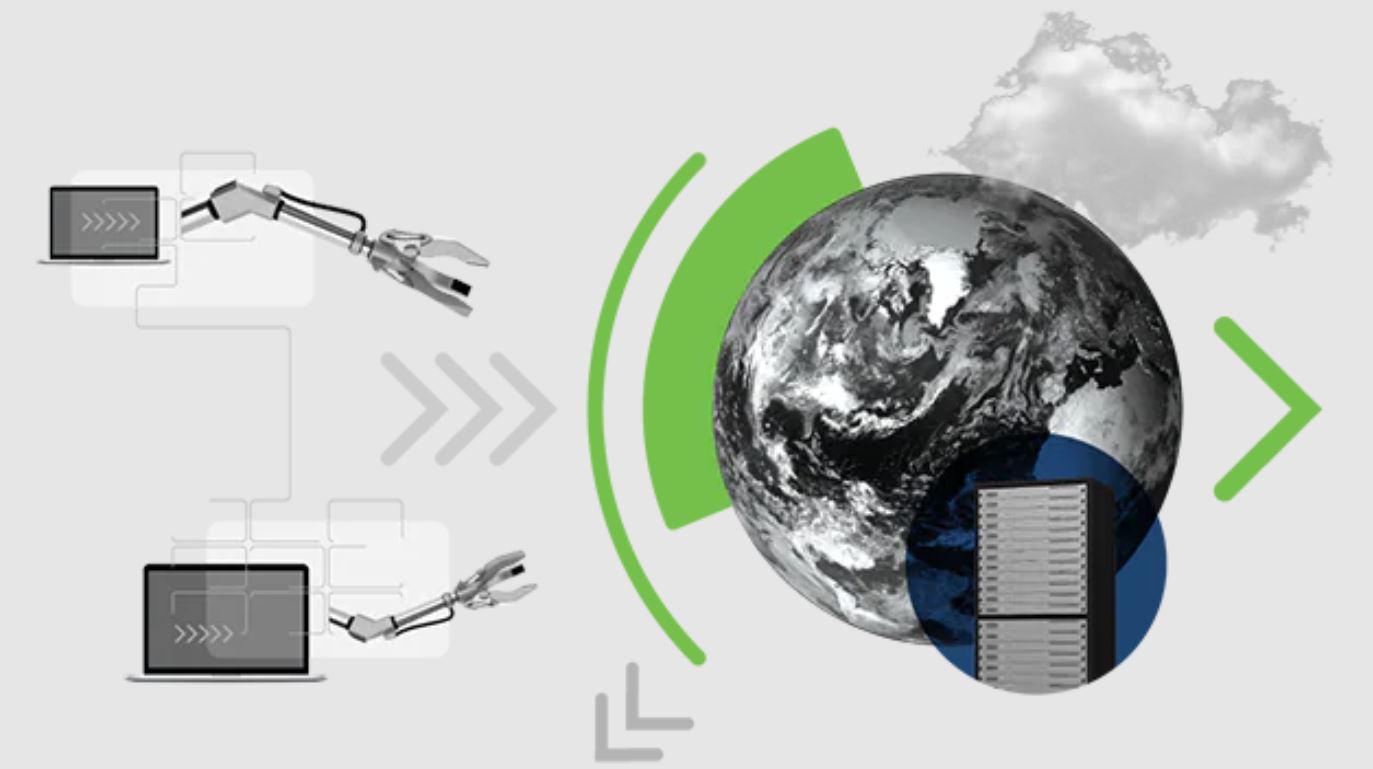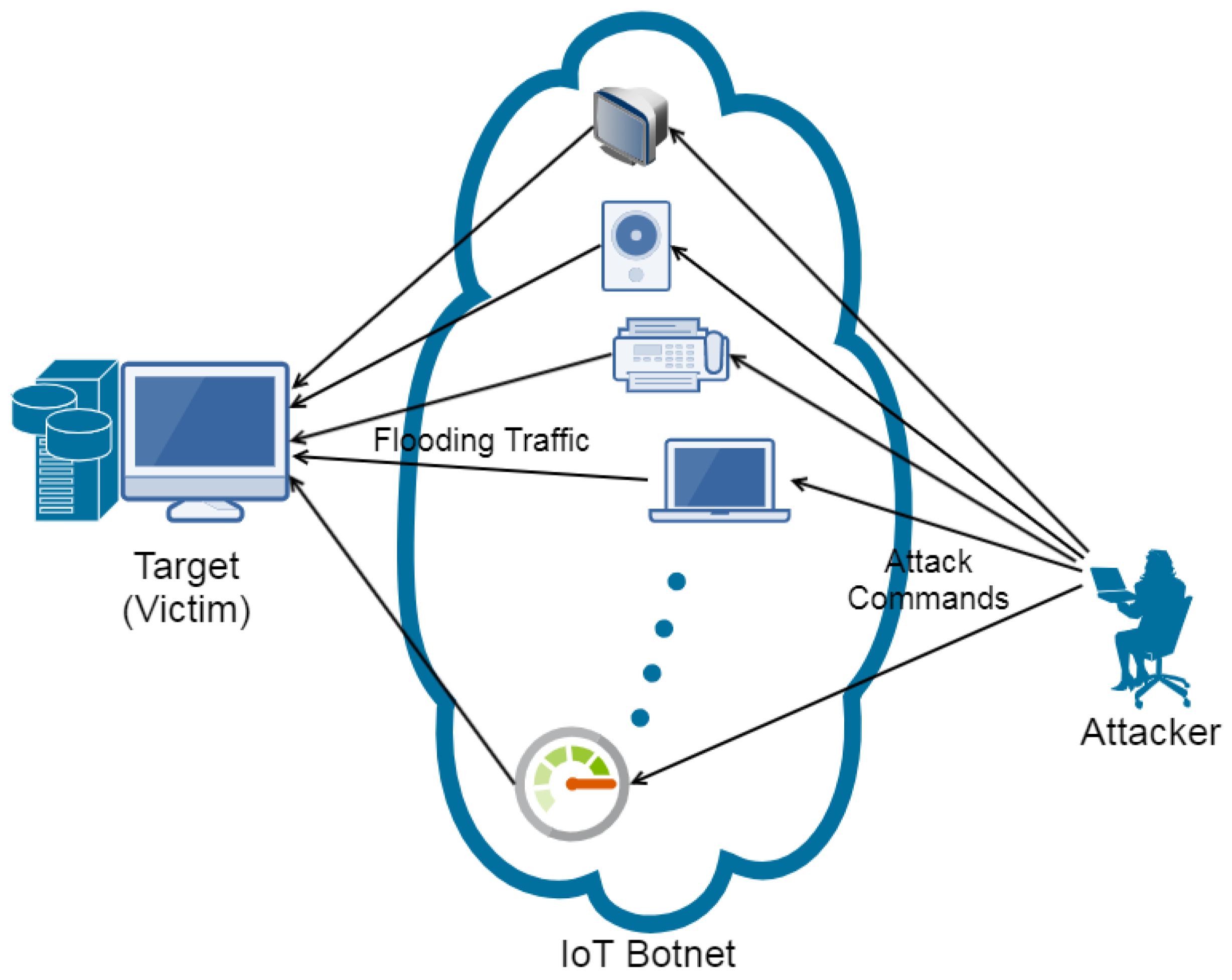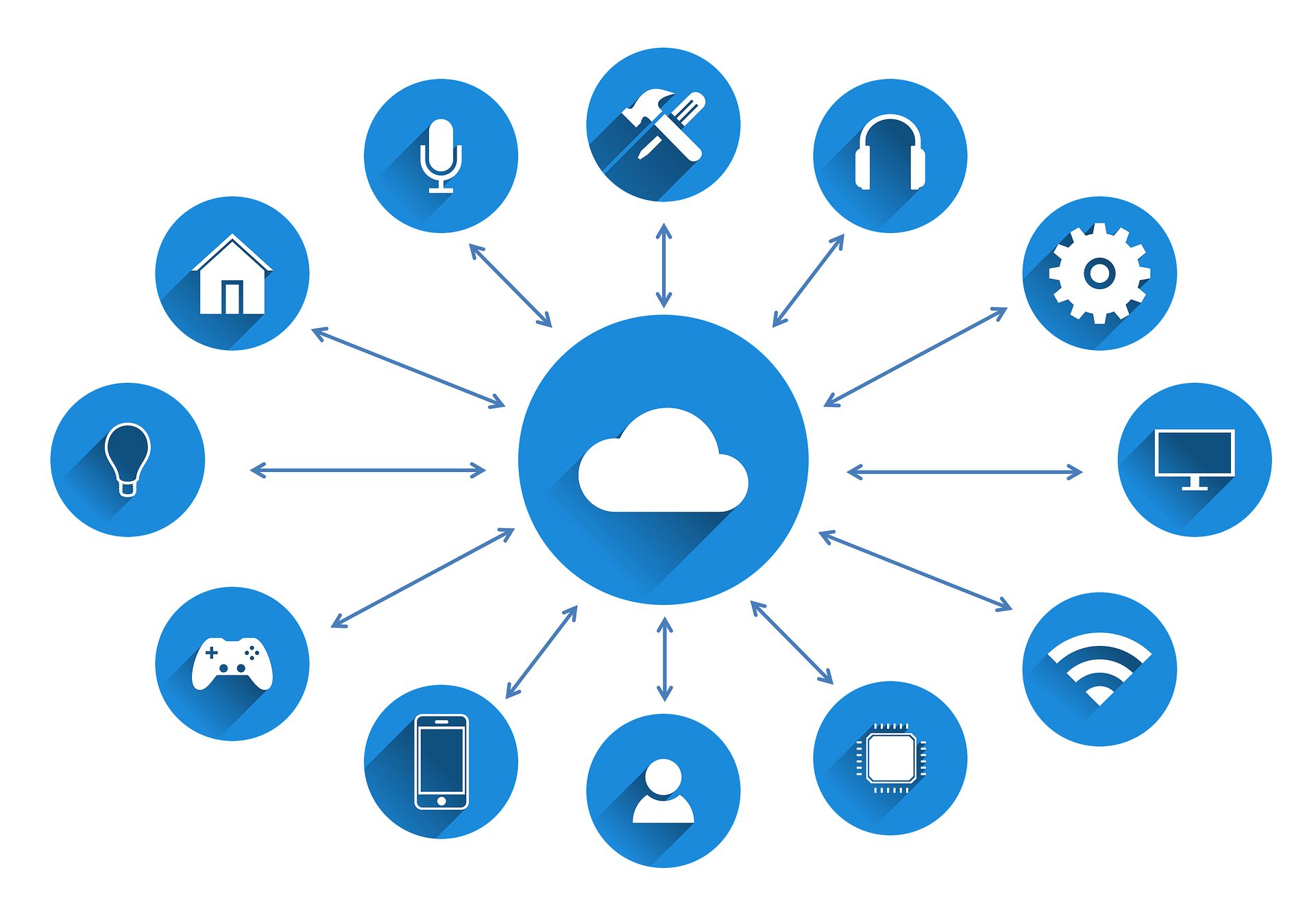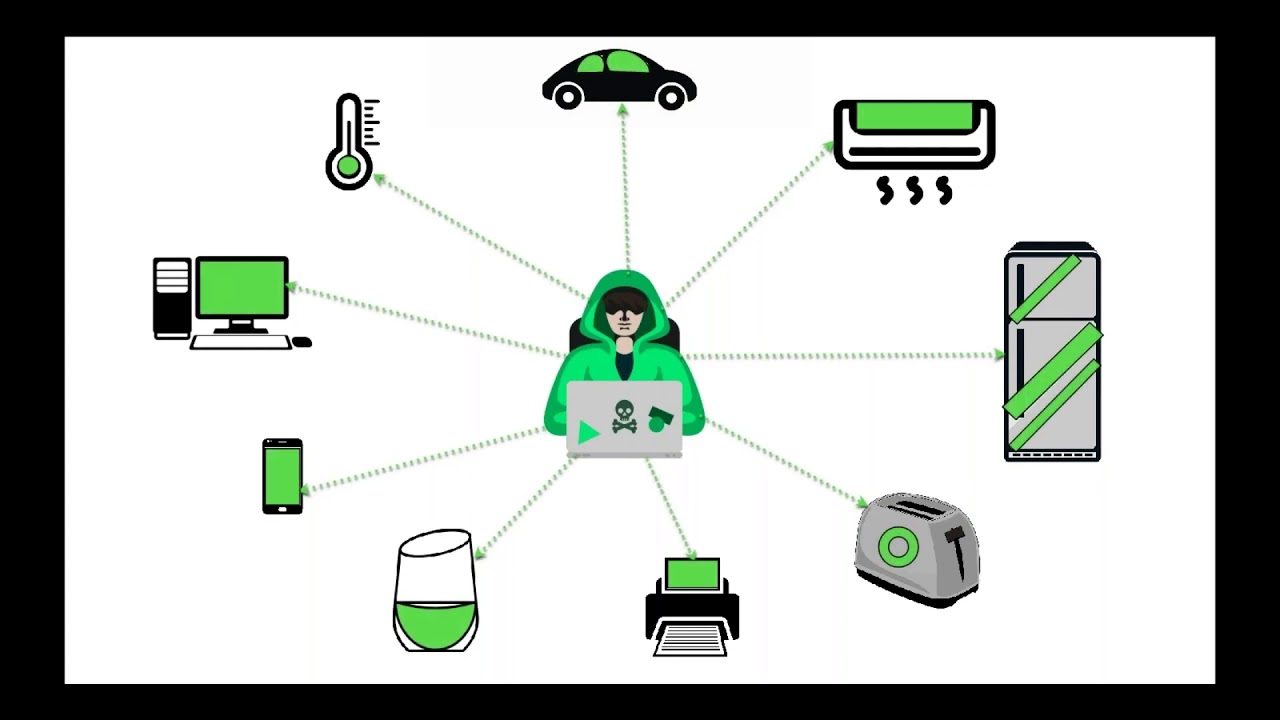Introduction
As our world becomes increasingly connected and technologically advanced, the concept of the Internet of Things (IoT) has gained widespread attention. With IoT, various devices and objects are connected to the internet, allowing them to communicate and share data seamlessly. While this interconnectedness brings numerous benefits, it also introduces new risks and vulnerabilities. One of the significant threats associated with the IoT is Distributed Denial of Service (DDoS) attacks.
A DDoS attack is a malicious attempt to disrupt the regular functioning of a network or website by overwhelming it with a flood of internet traffic. This overload of traffic causes the targeted server or network to become unresponsive, rendering it inaccessible to legitimate users. Traditionally, DDoS attacks were executed through a network of compromised computers, known as botnets. However, with the rise of the IoT, hackers have discovered a new avenue for launching large-scale DDoS attacks.
The Internet of Things refers to the network of physical devices embedded with sensors, software, and connectivity that enables them to gather and exchange data. These devices range from everyday household items, such as smart thermostats and voice assistants, to industrial machinery, medical devices, and even vehicles. The proliferation of IoT devices has created a vast ecosystem that offers convenience, automation, and improved efficiency. However, this rapid adoption has also led to a significant security challenge.
IoT devices are often not built with strong security measures due to various factors, including cost and time-to-market pressures. As a result, they become easy targets for hackers looking to exploit vulnerabilities and gain control over these devices. Once compromised, IoT devices can be harnessed to form botnets, which are then utilized to launch devastating DDoS attacks.
DDoS attacks leveraging IoT devices have gained prominence in recent years, threatening organizations, industries, and even the internet infrastructure itself. The vast number of interconnected IoT devices provides attackers with an army of compromised devices to launch attacks on a massive scale. This new wave of IoT-based DDoS attacks has pushed security experts and organizations to reevaluate their strategies to protect networks, devices, and online services.
What is a DDoS attack?
A Distributed Denial of Service (DDoS) attack is a cyberattack that aims to disrupt the regular functioning of a network or website. It involves overwhelming the target with a flood of internet traffic, rendering it unable to respond to legitimate user requests. Unlike a traditional Denial of Service (DoS) attack, which is carried out from a single source, a DDoS attack utilizes multiple sources to generate an even greater volume of traffic.
The primary goal of a DDoS attack is to cause service disruption, leading to financial losses, reputational damage, and customer dissatisfaction. These attacks can target various entities, including government organizations, businesses of all sizes, online services, and even individuals. Their impact can range from minor inconveniences to severe consequences, depending on the scale and duration of the attack.
DDoS attacks exploit the limitations of network resources and system capacity. By inundating the target server or network with an excessive amount of traffic, they consume vital resources such as bandwidth, processor power, and memory. As a result, the target becomes overwhelmed and unable to handle legitimate requests, leading to service degradation or complete outage.
DDoS attacks can be categorized into different types based on their approach and the methods used. Some common types include:
- Volume-based attacks: These attacks aim to flood the target’s network with a massive amount of traffic, often by using botnets or amplification techniques. The goal is to exhaust the bandwidth and system resources of the target.
- Protocol attacks: These attacks exploit vulnerabilities in network protocols, overwhelming the target’s network infrastructure or specific services. Examples include SYN floods, Ping of Death, or ICMP floods.
- Application-layer attacks: These attacks target the applications and services of the target, aiming to exhaust the server’s resources or exploit vulnerabilities in the application layer.
DDoS attacks have evolved over time, becoming more sophisticated and challenging to detect and mitigate. Attackers employ various techniques, such as IP spoofing, botnets, and botnet-for-hire services, to launch powerful and persistent attacks. They often utilize compromised devices, including IoT devices, to amplify the scale and impact of the attack.
Protecting against DDoS attacks requires robust security measures, including network monitoring, traffic filtering, rate limiting, and the use of specialized DDoS mitigation solutions. By actively monitoring and responding to DDoS threats, organizations can mitigate the risks and ensure the continuity of their online services.
What is the Internet of Things (IoT)?
The Internet of Things (IoT) refers to the interconnected network of physical devices that are embedded with sensors, software, and connectivity to enable them to collect and exchange data. These devices can range from everyday objects like smartphones, wearables, and smart home appliances to more complex systems like industrial machinery, vehicles, and even entire cities.
The driving force behind the IoT is the ability of these devices to communicate with one another and with central data centers or cloud-based platforms. This connectivity allows them to share information, process data, and take autonomous actions based on the gathered insights. The ultimate aim of the IoT is to create a seamless integration of the digital and physical worlds, enabling smarter decision-making, enhanced efficiency, and improved quality of life.
IoT devices are equipped with various technologies, including sensors, actuators, and embedded systems, which enable them to collect data about their environment. These sensors can measure factors such as temperature, humidity, light, and motion, among others, while actuators allow devices to perform specific actions based on the received information.
The data collected by IoT devices can be utilized in numerous ways. For instance, in a smart home, temperature sensors can automatically adjust the thermostat based on the occupants’ preferences, or motion sensors can trigger lights to turn on when someone enters a room. In industrial settings, IoT devices can monitor and control machines, optimizing production processes, and improving operational efficiency.
One of the key features of the IoT is the ability to gather large amounts of data, often referred to as Big Data. This data can be analyzed in real-time or stored for further analysis and insights. By analyzing this data, businesses and organizations can gain valuable insights into consumer behavior, operational patterns, and market trends, which can inform decision-making and drive innovation.
However, the widespread adoption of IoT devices also brings about challenges, particularly in terms of security and privacy. IoT devices often have limited processing power and memory, making them vulnerable to cyberattacks. Weak security measures combined with the potential for unauthorized access and control of IoT devices pose significant risks to personal privacy and data security.
Efforts are being made to address these concerns and establish industry standards for secure IoT device development and deployment. As the IoT continues to grow and evolve, it is expected to revolutionize various sectors, including healthcare, transportation, manufacturing, and beyond, transforming the way we live and work.
The Role of IoT in DDoS Attacks
The Internet of Things (IoT) has opened up new avenues for cyberattacks, and one of the significant threats associated with IoT is its role in Distributed Denial of Service (DDoS) attacks. IoT devices, with their widespread adoption and interconnectedness, have become attractive targets for hackers looking to harness their computing power for malicious purposes.
The primary reason IoT devices are vulnerable to DDoS attacks is their inherent lack of security measures. Many IoT devices are designed with a focus on functionality and cost-effectiveness, often neglecting robust security features. This makes them easily exploitable by hackers who can gain control over them and turn them into weapons for DDoS attacks.
IoT devices are typically connected to the internet, making them potential entry points for cybercriminals. Some common vulnerabilities observed in IoT devices include weak or default passwords, unpatched software, and lack of encryption. These security weaknesses provide a foothold for attackers to compromise the devices and utilize them as part of their botnet, a network of compromised devices.
Building a botnet using IoT devices offers several advantages for attackers. First, the sheer number of IoT devices available makes it possible to create botnets of unprecedented size and scale. With millions of interconnected devices, attackers can generate substantial amounts of traffic to overwhelm their targets.
Second, IoT devices often have more significant computing power than traditional devices targeted in DDoS attacks, such as personal computers. This increased computing power provides attackers with a greater capability to launch larger and more potent attacks. With the collective power of thousands of compromised IoT devices, DDoS attacks can reach unprecedented scale and intensity.
Finally, IoT devices are typically connected to high-speed internet connections, offering significant bandwidth potential. This allows attackers to generate massive amounts of traffic and direct it towards their target, further increasing the effectiveness of their DDoS attacks.
DDoS attacks leveraging IoT devices can have severe consequences for targeted entities. These attacks can disrupt their online services, leading to financial losses, reputation damage, and customer dissatisfaction. Moreover, the collateral damage caused by these attacks can extend beyond the targeted entities, impacting the broader internet infrastructure and causing disruption to other online services.
As the IoT continues to proliferate, the challenge of mitigating IoT-based DDoS attacks becomes more complex. Efforts are being made to improve the security of IoT devices through the establishment of industry standards and regulations. Additionally, network administrators and organizations need to implement robust security measures, including continuous monitoring, traffic analysis, and traffic filtering, to identify and mitigate IoT-based DDoS attacks.
By addressing the vulnerabilities in IoT devices and implementing effective security measures, it is possible to minimize the risk of IoT-based DDoS attacks and ensure the continued safe and secure operation of interconnected devices.
Vulnerabilities in IoT Devices
The rapid growth and widespread adoption of Internet of Things (IoT) devices have introduced numerous vulnerabilities that cybercriminals can exploit. These vulnerabilities stem from various aspects of IoT device design, implementation, and usage, making them attractive targets for hackers seeking to compromise the security and integrity of these devices.
One of the significant vulnerabilities in IoT devices is the lack of robust security measures during the development process. Many IoT devices are designed with a focus on functionality and cost-effectiveness, often sacrificing robust security features. This makes them easy targets for cyberattacks, as attackers can find and exploit vulnerabilities in the device firmware, software, or network protocols.
Another common vulnerability in IoT devices is weak or default passwords. Many devices come with preset passwords that are easily guessable or widely known, and users often fail to change these default credentials. Attackers can search for IoT devices with factory settings or weak passwords, gaining unauthorized access and control over them. Once compromised, these devices can be hijacked and used as part of a botnet to launch DDoS attacks or other malicious activities.
Furthermore, IoT devices often lack regular firmware updates and security patches. Manufacturers may not regularly release updates or provide mechanisms for users to update device firmware, leaving devices susceptible to known vulnerabilities. This creates a window of opportunity for attackers to exploit these vulnerabilities and compromise the devices for nefarious purposes.
Additionally, IoT devices may not implement proper encryption protocols for data transmission and storage. Inadequate encryption exposes sensitive information to potential interception and unauthorized access. This not only poses privacy risks but can also enable attackers to manipulate the data or launch other malicious activities within the network environment.
Physical security of IoT devices is another concern. Many consumer-grade IoT devices are easily accessible and may not have adequate physical security measures. Attackers can physically tamper with these devices or retrieve them to extract valuable information or inject malicious code.
Lastly, the sheer number and diversity of IoT devices make it challenging for users to manage and secure them effectively. Users may have multiple devices from different manufacturers, each with their own security configurations and update mechanisms. This complexity can make it difficult for users to ensure consistent security practices across their IoT ecosystem.
Addressing the vulnerabilities in IoT devices requires a multi-faceted approach. Manufacturers must prioritize security in device design and development, implementing secure coding practices, robust encryption, regular security updates, and secure authentication mechanisms. Users, on the other hand, should take proactive steps to secure their IoT devices by changing default passwords, keeping firmware up to date, and implementing proper access controls.
Furthermore, increased awareness and education around IoT security best practices are crucial for both manufacturers and end-users. By addressing these vulnerabilities at all levels, the security and trustworthiness of IoT devices can be improved, mitigating potential risks and ensuring a safer and more secure IoT environment.
Large-scale DDoS Attacks Enabled by IoT Devices
The advent of Internet of Things (IoT) devices has provided cyber attackers with a powerful tool for launching large-scale Distributed Denial of Service (DDoS) attacks. The sheer number of interconnected IoT devices makes it possible to create massive botnets, amplifying the scale and impact of these attacks.
IoT devices are particularly attractive to attackers due to their inherent vulnerabilities and lack of robust security measures. Many IoT devices are built with limited processing power and memory, making them easier to compromise. Additionally, weak or default passwords are prevalent in these devices, allowing hackers to gain unauthorized access and control over them.
Once attackers gain control of IoT devices, they can enlist them into botnets. A botnet is a network of compromised devices that can be commanded by the attacker to carry out various malicious activities, including DDoS attacks. With the vast number of IoT devices available, attackers can assemble botnets with thousands or even millions of devices, creating a formidable force for launching large-scale attacks.
The use of IoT devices in DDoS attacks enables attackers to generate immense amounts of traffic directed towards their targets. These attacks can overwhelm the targeted servers or networks, saturating their bandwidth and computational resources, rendering them unable to serve legitimate users. The sheer volume of traffic generated by these botnets can reach unprecedented levels, resulting in extended periods of service disruption and downtime.
Furthermore, the amplification factor provided by IoT devices allows attackers to magnify the impact of their DDoS attacks. Some IoT devices, such as network cameras or routers, can unwittingly act as amplifiers due to the way they respond to specific types of requests. By exploiting vulnerabilities in these devices, attackers can send small, specially crafted requests that provoke disproportionately large responses, increasing the overall volume of traffic directed towards the target.
The use of IoT devices in large-scale DDoS attacks has been demonstrated in numerous notable incidents. For example, the Mirai botnet, composed mainly of compromised IoT devices, launched massive DDoS attacks that caused widespread disruption to popular websites and internet infrastructure. This attack highlighted the potential for attackers to harness the collective power of IoT devices to create havoc on a global scale.
As the number of IoT devices continues to grow, the potential for even larger and more devastating DDoS attacks becomes a significant concern. Protecting against these attacks requires a multi-faceted approach, including increased security measures in IoT device design, regular firmware updates and patches, strong authentication mechanisms, and enhanced network security protocols.
Additionally, proactive monitoring and detection systems are essential for identifying abnormal traffic patterns and mitigating large-scale DDoS attacks as they occur. Network administrators can employ traffic filtering and rate limiting techniques to mitigate the impact of these attacks while maintaining the availability of services for legitimate users.
The collaboration between device manufacturers, cybersecurity experts, and internet service providers is vital in the ongoing effort to prevent and respond to large-scale DDoS attacks enabled by IoT devices. By addressing the vulnerabilities in IoT devices and implementing robust security measures, the potential for widespread disruption caused by these attacks can be significantly reduced.
Examples of IoT-based DDoS Attacks
The rise of the Internet of Things (IoT) has brought about several notable examples of Distributed Denial of Service (DDoS) attacks that leverage compromised IoT devices. These attacks have demonstrated the potential for significant disruption and the need for improved security measures within the IoT ecosystem.
One of the most well-known IoT-based DDoS attacks occurred in 2016 and involved the Mirai botnet. Mirai utilized a network of compromised IoT devices, including surveillance cameras and routers, to launch massive DDoS attacks. The attack targeted Dyn, a prominent Domain Name System (DNS) provider, causing widespread service disruptions and rendering many popular websites and online services inaccessible to users.
The Mirai botnet took advantage of weak or default passwords on IoT devices to gain unauthorized access and control. It then utilized these devices to generate an overwhelming volume of traffic towards its targets, overpowering the affected networks and causing significant disruption. The Mirai attack demonstrated the potential for IoT devices to be harnessed as powerful weapons in large-scale DDoS attacks.
Another prominent example is the IoT Reaper botnet, which emerged in 2017. This botnet targeted vulnerabilities in various IoT devices, exploiting known security weaknesses to gain control. Rather than relying solely on default or weak passwords, IoT Reaper employed more sophisticated techniques, including the exploitation of vulnerabilities in IoT device firmware.
What made IoT Reaper particularly concerning was its ability to actively infect and compromise a wide range of IoT devices, thereby expanding the botnet’s size and power. This dynamic nature allowed the botnet to adapt and evolve, making it more challenging to detect and mitigate. While the full impact of IoT Reaper remains unclear, its emergence underscored the ongoing threat posed by IoT vulnerabilities.
The rise of cryptojacking, where attackers hijack computing resources to mine cryptocurrency, has also made use of IoT devices. In some instances, attackers have exploited IoT devices to mine cryptocurrencies such as Bitcoin or Monero. By infecting IoT devices with malware, attackers can harness their computational power to mine cryptocurrencies, consuming energy and slowing down the devices in the process.
These examples highlight the significant risk posed by insecure IoT devices and their potential for being exploited in DDoS attacks and other malicious activities. As the number of interconnected devices continues to grow, the security of IoT devices remains a critical concern that requires ongoing attention and improvement.
To mitigate the risk of IoT-based DDoS attacks, several measures are essential. These include addressing vulnerabilities in IoT device design and implementation, implementing strong security measures such as encryption, authentication, and regular software updates, and promoting security awareness and best practices among IoT device users.
Collaboration between industry stakeholders, including IoT device manufacturers, cybersecurity experts, and regulatory bodies, is crucial in addressing the emerging threats and ensuring the security and integrity of the IoT ecosystem.
Preventing and Mitigating IoT-based DDoS Attacks
Preventing and mitigating Distributed Denial of Service (DDoS) attacks that leverage Internet of Things (IoT) devices require a multifaceted approach that involves proactive measures by device manufacturers, network administrators, and end-users.
One of the primary steps in preventing IoT-based DDoS attacks is to ensure robust security measures during device development and manufacturing. Manufacturers should prioritize security throughout the entire lifecycle of the device, including secure coding practices, encryption for data transmission and storage, and regular security updates.
Strong authentication mechanisms such as unique and complex passwords, and two-factor authentication can help prevent unauthorized access to IoT devices. Default or weak passwords should be avoided, and users should be prompted to change them upon initial setup.
Regular firmware updates are crucial to address known vulnerabilities and strengthen the security of IoT devices. Manufacturers should provide easy-to-use mechanisms for users to keep their devices up to date with the latest security patches.
Network administrators also play a vital role in preventing and mitigating IoT-based DDoS attacks. Implementing network segmentation can isolate IoT devices from critical infrastructure and other devices, limiting the impact of compromise. Traffic filtering and rate limiting techniques can help identify and block suspicious traffic, reducing the impact of DDoS attacks.
Network monitoring and anomaly detection systems are essential for identifying unusual or malicious behavior on IoT devices. By analyzing network traffic patterns, administrators can detect potential signs of a DDoS attack and take proactive measures to mitigate it.
End-users themselves have an important responsibility in securing their IoT devices. This includes changing default passwords, keeping firmware up to date, and practicing good cyber hygiene. Regularly reviewing the security settings and configurations of IoT devices can help identify potential vulnerabilities and minimize their risk.
Increased awareness and education are key to preventing IoT-based DDoS attacks. Users need to be educated about the potential risks of IoT devices and the steps they can take to secure them. Manufacturers should provide clear instructions and guidelines on device security, while cybersecurity experts and organizations should disseminate best practices and guidelines for securing IoT devices.
Collaboration between manufacturers, network administrators, and cybersecurity experts is crucial in establishing strong security standards and protocols for IoT devices. Public-private partnerships can help drive industry-wide initiatives to improve the security of IoT devices and mitigate the risks associated with IoT-based DDoS attacks.
By adopting a proactive and comprehensive approach to security, the risks of IoT-based DDoS attacks can be significantly reduced. This requires ongoing efforts and collaboration among all stakeholders involved in the deployment and usage of IoT devices.
Conclusion
The Internet of Things (IoT) has brought about significant advancements in connectivity and technology, but it has also introduced new risks, such as Distributed Denial of Service (DDoS) attacks. These attacks, leveraging the vast number of interconnected IoT devices, have the potential to cause widespread disruption to networks, services, and infrastructure.
IoT devices are particularly vulnerable to DDoS attacks due to their lack of robust security measures. Weak passwords, unpatched software, and inadequate encryption are among the vulnerabilities that cybercriminals exploit to gain control over these devices. Once compromised, IoT devices can be utilized in botnets, enabling attackers to launch large-scale and amplified DDoS attacks.
Preventing and mitigating IoT-based DDoS attacks require a collaborative effort from different stakeholders. Device manufacturers play a crucial role in building secure IoT devices, implementing encryption, strong authentication mechanisms, and regular security updates. Network administrators must implement measures like traffic filtering and rate limiting to detect and mitigate attacks, while end-users should practice good cybersecurity hygiene, such as changing default passwords and keeping devices up to date.
Increased awareness and education are essential to address the evolving threats posed by IoT-based DDoS attacks. Users need to be educated on the risks associated with IoT devices and the steps they can take to secure them. Manufacturers, cybersecurity experts, and regulatory bodies should work together to establish industry standards and promote security best practices.
Addressing the vulnerabilities and risks associated with IoT-based DDoS attacks is an ongoing challenge, as the IoT landscape continues to expand. However, by implementing strong security measures, fostering collaboration among stakeholders, and staying vigilant to emerging threats, we can ensure a safer and more secure IoT ecosystem.

























